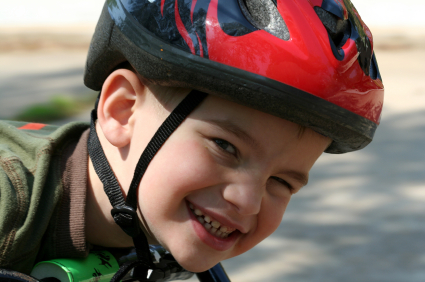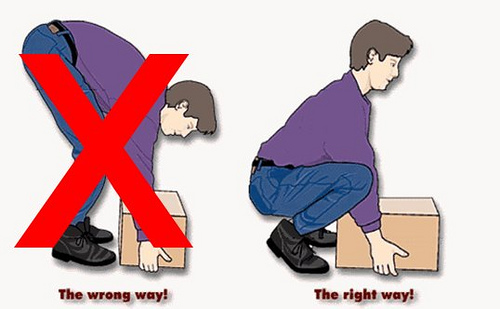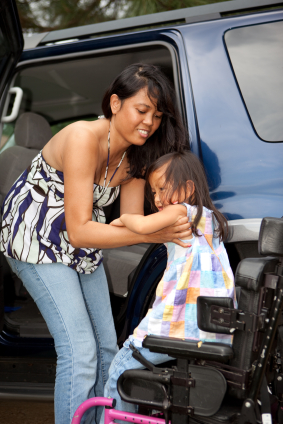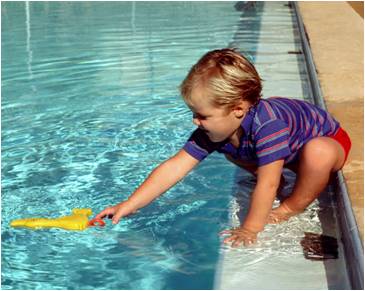 Water may be fun for children to play with — but it can also be deadly. Consider these water-safety tips for pools, natural bodies of water and household hazards.
Water may be fun for children to play with — but it can also be deadly. Consider these water-safety tips for pools, natural bodies of water and household hazards.
Residential swimming pools and spas
Most children are drawn to water. It’s sparkly. Things float in it. And it’s fun to splash. But water safety is no laughing matter. Anyone can have a water-related accident — even children who know how to swim. To keep your children safe in and near the water, follow simple water-safety guidelines.
Multiple layers of protection can help ensure water safety and prevent drowning in a home pool or spa. If you have a pool or hot tub, follow all local safety ordinances. Also consider these general water-safety tips:
- Fence it in. Surround your pool with a fence that’s at least 4 feet (1.2 meters) tall. Make sure slatted fences have no gaps wider than 4 inches (10.2 centimeters), so kids can’t squeeze through. Avoid chain-link fences, which can be easy for children to climb. Install self-closing and self-latching gates with latches that are beyond a child’s reach.
- Install alarms. If your house serves as part of your pool enclosure, protect any doors leading to the pool area with an alarm. Add an underwater pool alarm that sounds when something hits the water. Make sure you can hear the alarm inside the house.
- Block pool and hot tub access. Use a rigid, motorized safety cover to block access to the pool when it’s not in use. Secure a cover on hot tubs as well. Empty inflatable pools after each use. Don’t allow water to collect on top of the pool or hot tub cover. Remove aboveground pool steps or ladders or lock them behind a fence when the pool isn’t in use.
- Teach children to swim. Most children can learn to swim at about age 5 — but know that swimming lessons won’t necessarily prevent a child from drowning.
- Remove toys. Don’t leave pool toys in the water. A child may fall into the water while trying to retrieve a toy.
- Keep your eyes peeled. Never leave children unsupervised near a pool or hot tub. During social gatherings, adults who know how to swim can take turns being the “designated watcher.” Don’t rely on air-filled or foam toys, such as water wings, noodles or inner tubes, to keep children safe.
- Beware of drains. Don’t allow children to play near or sit on pool or hot tub drains. Body parts and hair may become entrapped by the strong suction. Use drain covers, and consider installing multiple drains to reduce the suction.
- Keep emergency equipment handy. Store a safety ring with a rope beside the pool. Make sure you always have a phone in the pool area.
Natural bodies of water
Swimming conditions can be unpredictable in lakes, rivers and oceans. Water depth can change rapidly, as can water temperature, currents and the weather. Murky water may conceal hazards. Follow these water-safety tips:
- Don’t swim alone. Never allow children to swim alone or without adult supervision.
- Wear a life jacket. Children should wear personal flotation devices whenever riding in a boat or fishing. An air-filled swimming aid isn’t a substitute for a life jacket.
- Feet first. The first descent into any body of water should be a jump — feet first. Before the jump, check water depth and temperature and look for underwater hazards.
- Stay in designated areas. At public beaches, swim only in areas set aside for swimming. Don’t allow children to swim in drainage ditches or other water-filled areas not intended for swimming.
- Beware of thin ice. Drowning can occur in the winter, too. Avoid walking, skating or riding on weak or thawing ice.
Toilets, bathtubs and buckets
The water in common household items can be dangerous for young children. A baby can drown in just 1 inch (2.5 centimeters) of water. A curious toddler can fall into a toilet, bucket or fish tank. Taking these precautions can help:
- Keep the bathroom door closed. Install a safety latch or doorknob cover on the outside of the door.
- Supervise bath time. Never leave a child alone in the bathtub or in the care of another child. Drain water from the tub immediately after use.
- Shut toilet lids. Install childproof locks on toilet lids.
- Store buckets safely. Empty buckets and other containers immediately after use. Don’t leave them outside, where they may accumulate water.
Of course, even if you’re diligent about water safety, accidents are still possible. Prepare for an emergency by learning cardiopulmonary resuscitation (CPR). Quick action can save a life.
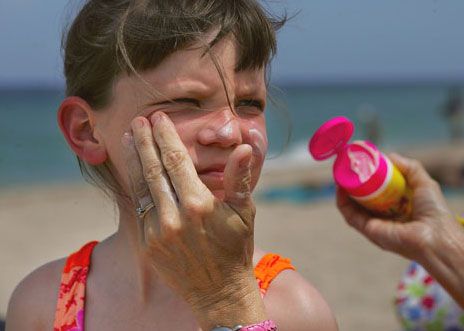 Since its inception in 1979, The Skin Cancer Foundation has always recommended using a sunscreen with an SPF 15 or higher as one important part of a complete sun protection regimen. Sunscreen alone is not enough, however. Read our full list of skin cancer prevention tips.
Since its inception in 1979, The Skin Cancer Foundation has always recommended using a sunscreen with an SPF 15 or higher as one important part of a complete sun protection regimen. Sunscreen alone is not enough, however. Read our full list of skin cancer prevention tips.
